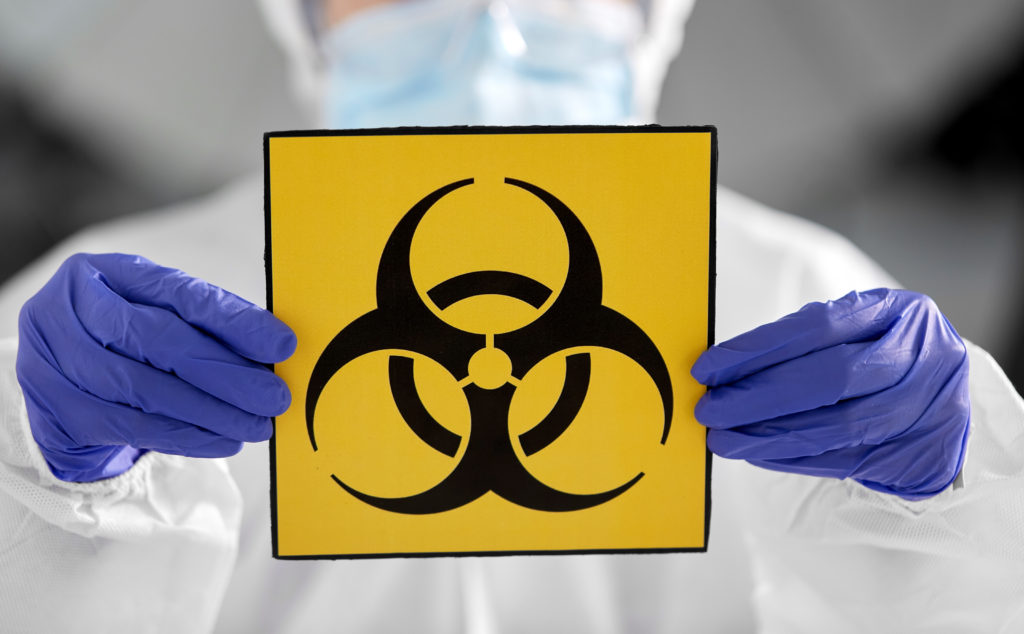Managing biohazard waste effectively is a regulatory requirement in the UAE and a critical aspect of maintaining public health and environmental safety. With stringent regulations, understanding and adhering to these guidelines is important for healthcare facilities, laboratories, vet clinics, pharmacies, and any entity handling biohazardous materials.
What is Biohazard Waste?
Biohazard waste, also known as biomedical waste, includes waste generated during medical, research, or laboratory activities. It poses a potential threat to human health and the environment. This waste can range from used needles and syringes to contaminated surgical gloves, biological samples, and other materials contaminated with infectious agents.
Key Regulatory Framework in the UAE around Biohazard Waste Management
Major emirates of Dubai and Abu Dhabi generate about 86 percent of the hazardous waste in the UAE. To manage this waste effectively, the UAE has established a strong regulatory framework.
In Dubai, the following technical guidelines control the handling and disposal of hazardous wastes: Federal Law No. 12 of 2018 On the Integrated Waste Management, Federal Law (No.) 24 of 1999 and modified by Federal Law (No.) 11 for 2006 regarding Protection & Development of the Environment, Executive Order of Federal Law No. 24 of 1999 for Regulation of Handling Hazardous Materials, Hazardous Wastes and Medical Wastes, issued by Cabinet Decree No. 37 of 2001, Code of Practice on The Management of Medical Wastes from Hospitals, Clinics and Related Health Care Premises in Dubai (1997), Local Order No. (115) of 1997 Concerning Medical Wastes Management in the Emirate of Dubai and many more.
In Abu Dhabi too, there are many legislative requirements related to hazardous waste. Some of them are Federal Law No (24) for the year 1999 on the Protection and the Development of the Environment, Federal Regulation for Handling Hazardous Materials, Hazardous Wastes and Medical Wastes, issued by Cabinet Decree No. 37 of 2001, Law No (21) for the year 2005 on Waste Management in the Emirate of Abu Dhabi, Health Authority Abu Dhabi Policy for Medical Waste Management in Health Care Facilities (PPR/HCP/P0002/07; Ver.1), Decree No 42 of 2009 Requirements of the Abu Dhabi Emirate Environment, Health and Safety Management System (EHSMS) Regulatory Framework and many more.
In addition, the UAE has been a member state of the Basel Convention on the Control of Trans-boundary Movements of Hazardous Wastes and Their Disposal (PDF) since 1990 and bans the movement of hazardous waste by sea, land or air within the country without written permission from the ministry.
How to Ensure Compliance with the Waste Management Regulations
Handling the complexities of biohazard waste management in the UAE requires a systematic approach. Here are key steps to ensure compliance:
Step 1: Classification and Segregation
Proper classification and segregation of biohazard waste are fundamental. The UAE regulations categorize waste into different classes, such as:
- General Waste: Non-hazardous waste that requires standard disposal methods.
- Infectious Waste: Waste contaminated with pathogens, requiring special handling.
- Sharps Waste: Items like needles and scalpels that pose a sharp hazard.
- Chemical Waste: Waste containing chemicals that require specific disposal techniques.
Each category must be clearly labeled and segregated at the point of generation to prevent cross-contamination.
Step 2: Adopting Safe Storage Practices
Safe storage is crucial to prevent accidental exposure and environmental contamination. Biohazard waste should be stored in designated, secure areas with controlled access. Containers used for storage must be leak-proof, puncture-resistant, and clearly labeled with international biohazard symbols.
Step 3: Implementing Safe Disposal Methods
Disposal methods must comply with UAE regulations and best practices. Common methods include:
- Autoclaving: Sterilizing infectious waste through high-pressure steam.
- Incineration: Burning waste at high temperatures to eliminate pathogens.
- Chemical Treatment: Using chemicals to neutralize hazardous agents before disposal.
Each method must be carried out by certified facilities equipped to handle biohazard waste safely.
Step 4: Training and Certification
Staff handling biohazard waste must undergo regular training and certification. This ensures they are knowledgeable about safety protocols, waste handling procedures, and emergency response measures. Training should cover aspects such as:
- Safe handling and disposal techniques.
- Use of personal protective equipment (PPE).
- Emergency response procedures in case of spills or exposure.
Step 5: Regular Audits and Inspections
Conducting regular audits and inspections helps maintain compliance and identifies areas for improvement. These assessments should review waste management practices, storage facilities, and disposal methods to ensure they meet UAE regulations.
Adhering to UAE’s biohazard waste management regulations offers numerous benefits -from reducing the risk of fines and legal consequences to environmental protection and enhanced public health to improving overall facility operations. By implementing the outlined steps and staying updated with regulatory changes, healthcare facilities and businesses can ensure compliance with these regulatory frameworks.
For further assistance or to discuss biohazard waste management solutions for your facility, contact our expert team today.
Author: Shilpi Choudhury



